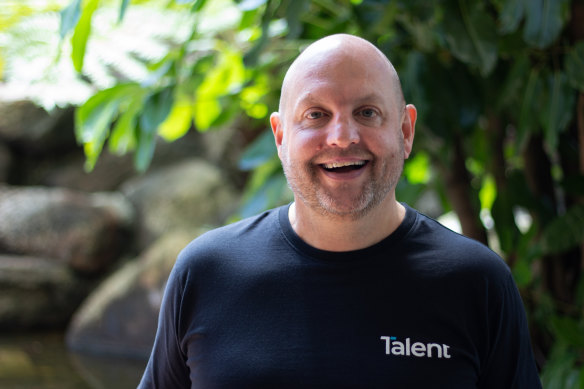‘I could just be who I was’: The benefits of creating an inclusive workplace
By Sue White
When chief executive of Talent International Mark Nielsen was in the early days of an investment banking career, he was grappling with the idea of coming out both at work and to his friends.
“My biggest fear was always in the back of my mind: ‘What happens if I am exposed as being gay? How will this impact my career?’ [I also worried about] my parents finding out – a real snowball effect. I would overcompensate and pretend I was straight, and nobody really knew the real me. It took a lot of energy to try to live that life,” Nielsen says.
Things shifted just after he turned thirty. Neilsen decided to switch industries, and with it, was determined to ensure he felt comfortable at work in being open about his identity in future. In his fourth interview for a new role, he told his soon-to-be boss he was gay.
“That was the first role where I could be myself and from there my career really took off. I did not have to utilise the energy in order to have this double life and I could just be who I was. I could really focus and give that business my all,” Nielsen says.

The experience taught Nielsen a lot about leadership.
“The best advice I’ve received is you – as the leader – have to set the tone in the organisation, and you have to make sure that everybody in your organisation follows that,” he says.
Sally Goldner is a diversity consultant and LGBTIQA+ diversity educator who has been speaking with workplaces on the topic for over 20 years. She says while organisations’ understanding has improved, there are plenty of gaps.
“One of the things that needs change is that diversity education that is specific to or largely focussed on one group in LGBTIQA+ communities is best delivered by people (or if two presenters, at least one person) with the lived expertise. I have sadly seen too many presentations where this has not been followed resulting in ‘101 fails’ and lack of legal compliance,” Goldner says.
Lifeview Aged Care and Monash University are two long-term clients Goldner says she remains impressed by.
“They have a culture of curiosity and of being open to learning,” Goldner says.
They also admit mistakes: “Eight billion humans make mistakes. Just don’t keep making the same one,” Goldner notes.
“[When mistakes happen, these organisations] try their best to fix them, learn from them and prevent a recurrence. They proactively keep learning and staying current with new learnings.”
For organisations keen to do better, Goldner says waiting until things are perfect is no help to anyone.
“We all realise we ‘know that we don’t know’ something at some point – and that’s OK, just don’t stay stuck or wallow. Momentum is the solution: start the ball rolling and move towards ‘we know what we know’,” she says.
Back at Talent International, Neilsen also emphasises that words alone don’t make an inclusive work environment. Action is vital.
“You can’t just say it [something] with no action. You’ve actually got to live it. It needs to be part of the fabric of the organisation.”
KEY FACTS:
- To build a more inclusive workplace, match daily behaviours to values.
- “Writing a values statement that includes words like respect and diversity is a start; tucking it into a drawer and not acting on it on a daily basis makes it largely useless,” says diversity consultant Sally Goldner.
- Look at unconscious bias. “That means ongoing learning and un-learning.”
- Ensure inclusion is broad. “It’s a mistake is to say, ‘Look, here’s our trans project.’ Siloism is not inclusion.”
Most Viewed in Business
Source: Thanks smh.com